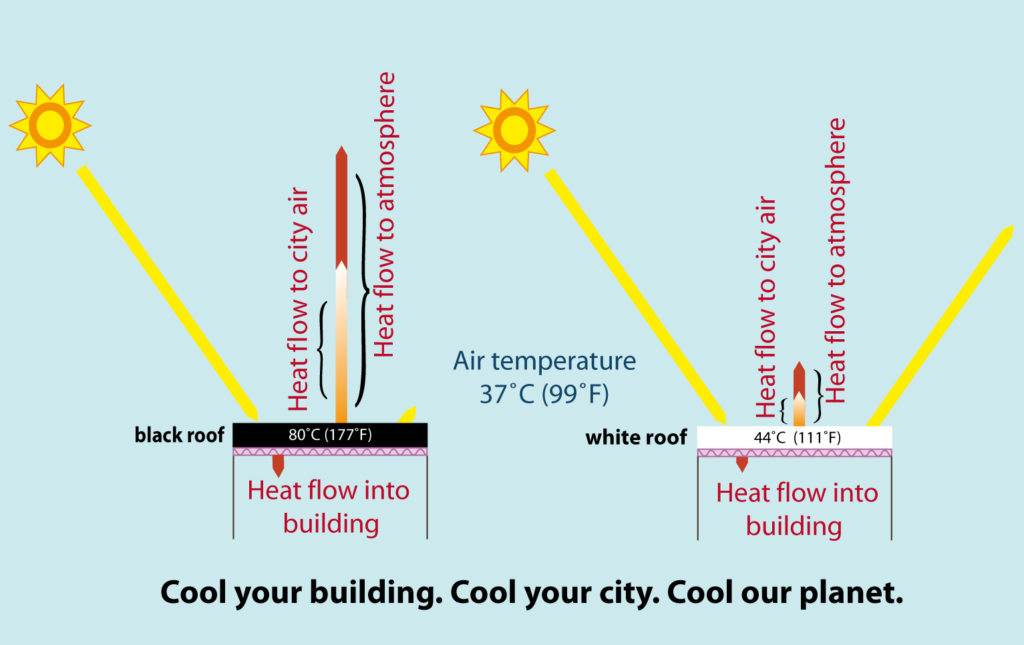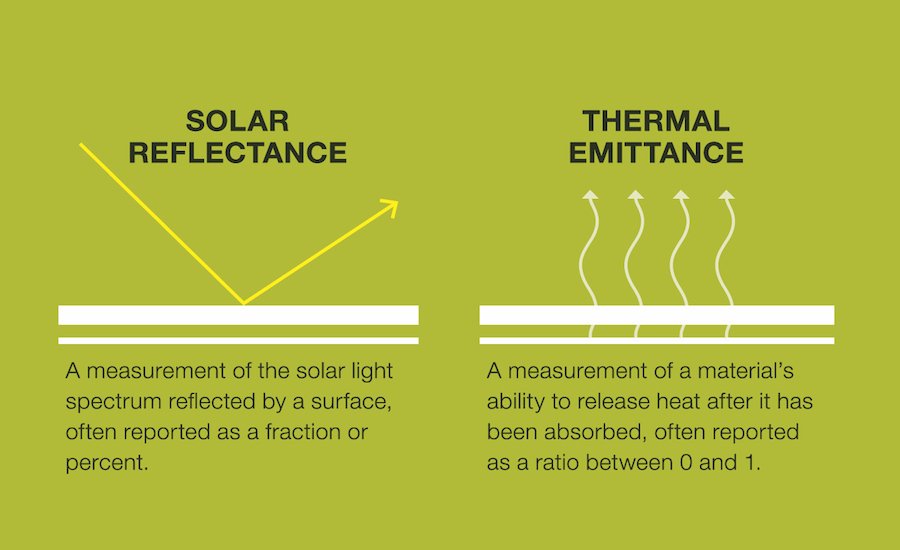In 2010, a Berkeley Lab study based on NASA data estimated that using “cool roof” techniques on the roofs and pavements of all cities in the northern hemisphere could result in a one-time removal of more than 44 billion tons of CO2 — 24 billion tons from roofs and 20 billion tons from pavements. That is more than the whole annual world carbon emissions.

This cool roof approach is available today and very affordable (as compared to shifting to electric vehicles or geoengineering), and it has the potential to offset the carbon emissions from 300 million automobiles and trucks.
Cities are now 2 to 5 degrees warmer than rural or natural places on average. That difference may be as high as 20 degrees on hot summer days. A black roof in summer in New York City can get hot enough to literally fry an egg — 190º F.

White reflects more light than darker hues. This is known as solar reflectance, but it does not reflect infrared energy. A “cool” roof should have both high solar reflectance and high thermal emittance.
Cool roof materials are being developed by companies such as 3M, which employ darker hues and depend on greater thermal emittance to keep roofs cool. They are now utilizing granules that can reflect up to 25% of solar radiation, even in dark hues, which is double the performance of traditional shingles.
More sophisticated materials, such as polymer sheets, reflect more than 90% of incoming radiation across multiple hues with little to no added expense. A cool roof may be up to 54º F cooler than a comparable black roof using passive cooling methods.

Many cities in Europe and India have come up with building codes or ordinances that require cool roof technologies. The roofs must have high solar reflectance and thermal emittance standards.
In the effort to control global warming, this is the low-hanging fruit. Forget about shooting aerosols into the stratosphere or attempting to harvest CO2 straight from the air. This would be significantly less expensive and far more effective than any of those options.
Reference- Washington Post, Clean Technica, Nature, Berkeley Lab Study, Interesting Engineering, Popular Science






